OK, so full disclosure, I went looking for a rangerfinder thinking I would buy something small, light and discreet as a daily carry that I could slip in my pocket. Something like a Yashica Electro say… As you can see by the title of the review, I didn’t buy one. Being fully mechanical and with an out of this world 45mm, F1.4 leaf shutter lens of the Yashica-Lynx-14 won me over. I mean, look at it…
So the specs are as follows: It has a 45mm, f/1.4 – F16 lens with a maximum shutter speed of 1-1/500, plus Bulb. It has a minimum focussing distance of 0.8m or 2.6 feet. Oh, and it weighs a ton – the Yashica Lynx-14 is around 850 grams, or 2lbs in old money.
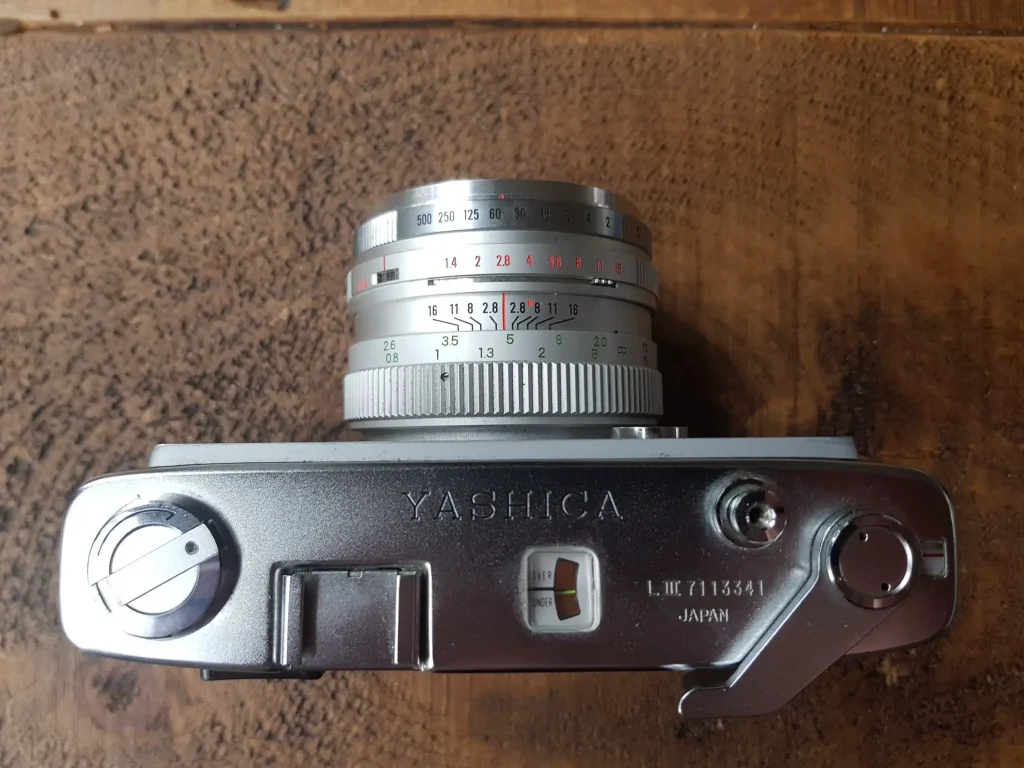
The light meter has an ASA range of 10-800. It’s also the only electronic part of the Yashica Lynx-14 ,which, for me, was a huge selling point. I bought this particular camera knowing the light meter was broken. I want to learn to expose by eye, so this was no issue. With a fully functioning model, you would activate the meter by the button on the front that says ‘switch’. You can check your exposure either by looking at the dial on the top or through the viewfinder which has an ‘Over/Under’ indicator.
So how does the Yashica Lynx-14 feel to shoot? To me it feels like I want it to feel. The film advance is smooth and reassuring and the shutter is quiet but still has a great click to it. The viewfinder is large and bright, with clear parallax framelines and a contrasty focusing patch in the middle – something that Yashica cameras are known for.
However, one problem I have had is that the shutter can be triggered easily since there is no lock. It may be because I’m a digital native and relatively new to film, but all my other film cameras have some guard against this (apart from my 1930’s Zeiss Ikon). After a couple of accidental actuations, I quickly learned to wind before I shoot, rather than winding on after. Unfortunately, this can add a precious second or two if you want to capture a moment.
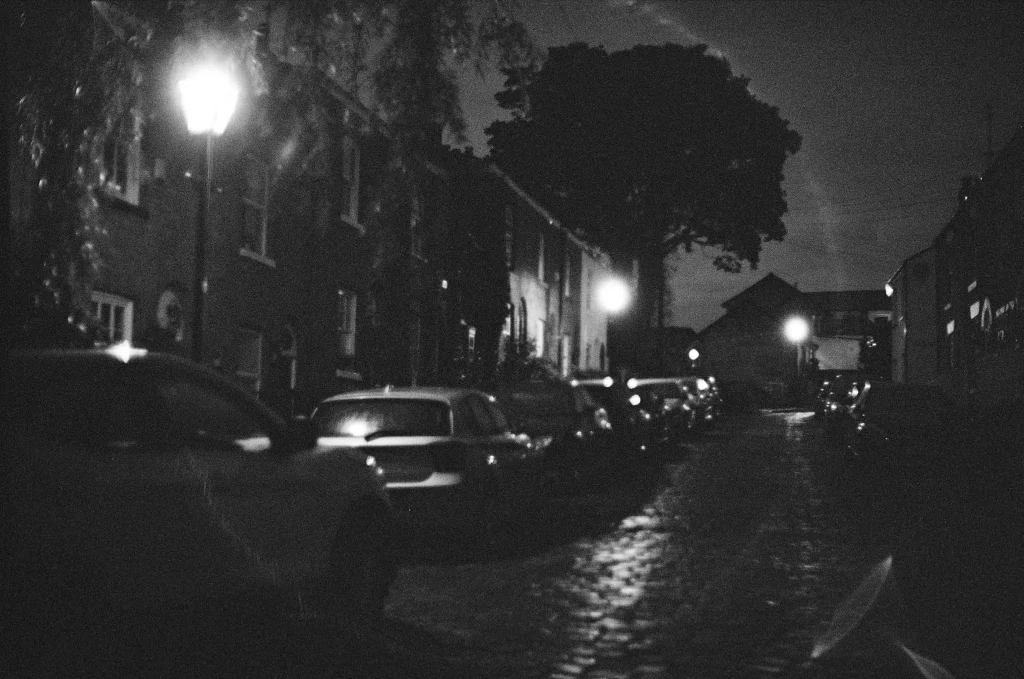
Focusing on the Yashica Lynx-14 is nice and smooth, but sometimes I’ve found myself thrown by the weird stepless aperture ring which is easily changed by accident. If you do this, you will have to look at the top of the lens to reset, which can get a tad annoying, but is okay once you’ve got used to it. I’m sure there’s a good reason why it’s not stepped but it is odd to start with. Attempting to shoot in very dark environments I’ve also found that I needed to focus on harder edges as the patch can get a little dark for precise focusing on soft subjects.
Some of you may know that the UK has just had an exceptionally hot summer and a 1/1000 setting would have given me a little wiggle room for daylight exposure. Sunny 16 saw me through but a few times it was f/16 or 1/500 all the way! Thankfully the films I had were 200 asa, though I was regularly finding the camera settings maxed out on brightness.
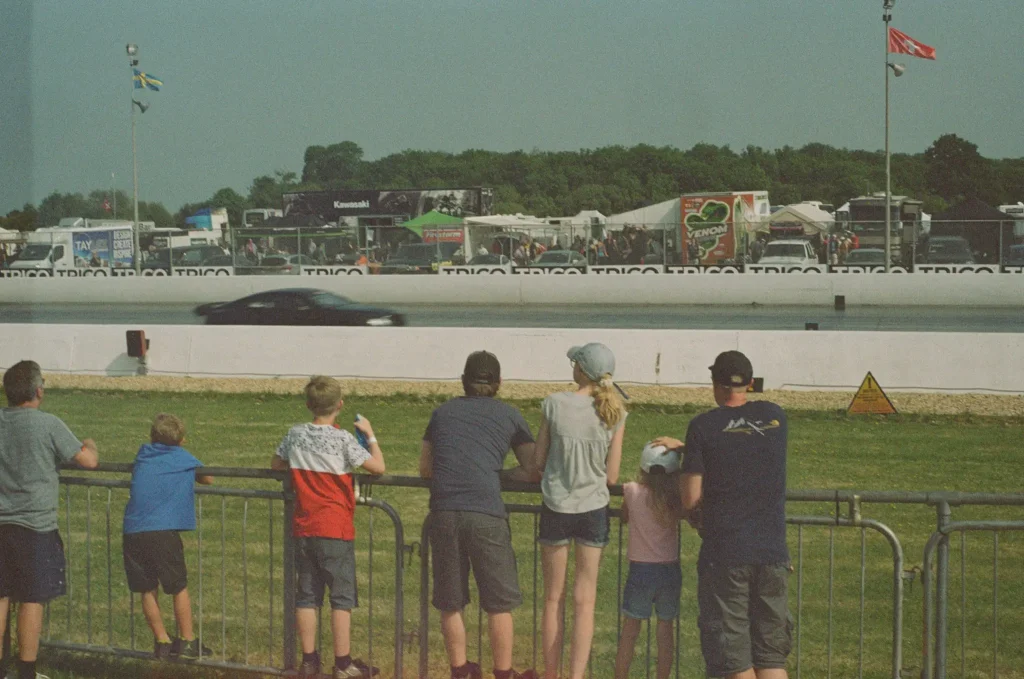
Until I bought the Yashica, all my other cameras had 35mm lenses, so the 45mm took a little getting used to. I was pleasantly surprised to discover that it’s a really versatile focal length though. It fits nicely between 35mm and 50mm and works quite nicely portrait lens allowing framing that wouldn’t look quite right with a 35mm lens. But, it’s also not so long in it prevents me from taking wider landscape shots. As you can see from the images, I tend to shoot scenery photos, but this lens allowed me to get more portrait photos, with lovely film bokeh too.
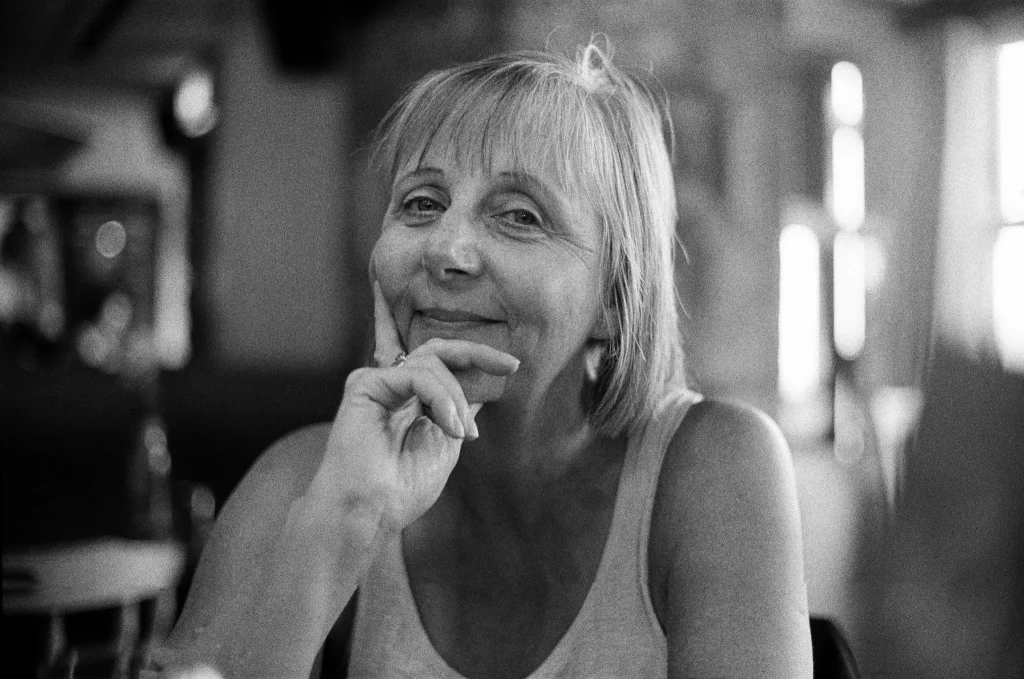
The Yashica Lynx-14 lens isn’t perfect for street – it feels slightly too tight to me – but, the viewfinder does allow some extra room to see what’s coming. I’m convinced that – although the frame lines are parallax corrected – you do get slightly more in the shot than they indicate. It’s reliably sharp with a little softness in the edges at 1.4 but that is to be expected!
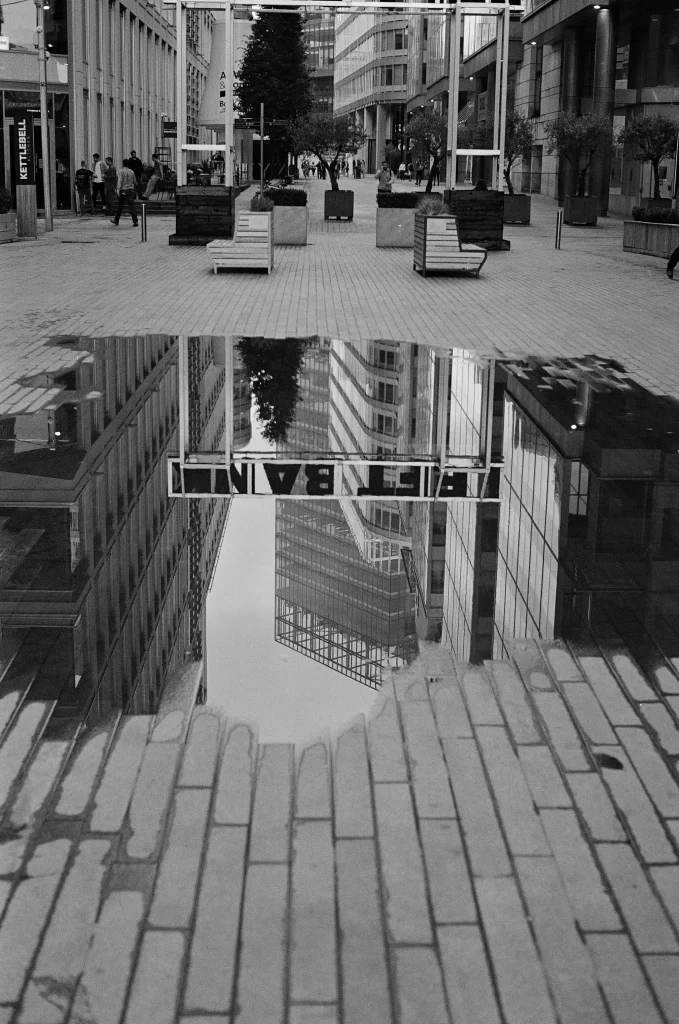
The Yashica Lynx-14 comes into its own in low light. Because of the light leaf shutter, I’ve found I can shoot reasonably reliably under a 1/60 – and with the extra umph the f/1.4 maximum aperture gives me, I’ve had some shots I’m really pleased with. This camera was made to be versatile – I’ve found I can carry it all day and not have to stop shooting just because the bar I’ve ended up in is too dark. I think the weight actually adds a little stability too, which isn’t such a bad thing at slower shutter speeds. The pic below was taken at f/1.4 and 1/30 Shutter with 200 asa film.
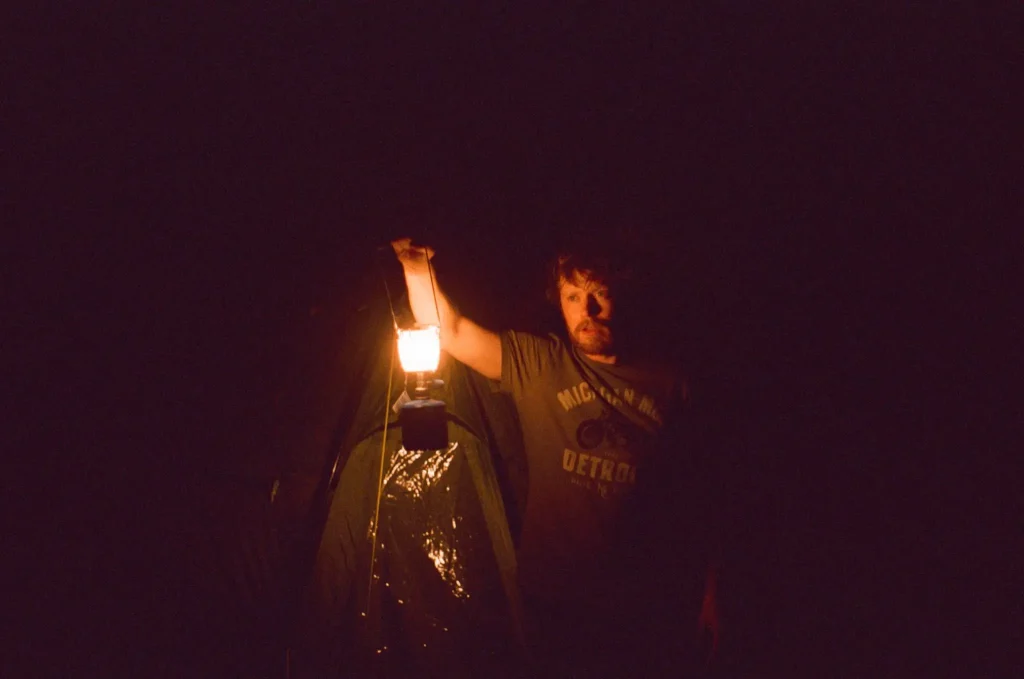
It’s easy to complain about the weight, but the Yashica Lynx-14 is made entirely of metal and that means it is tough. Mine’s been going since the 60’s and the only thing that’s not working is its sole electronic part. It’s a smash ’n’ snap, and it will probably out last me.
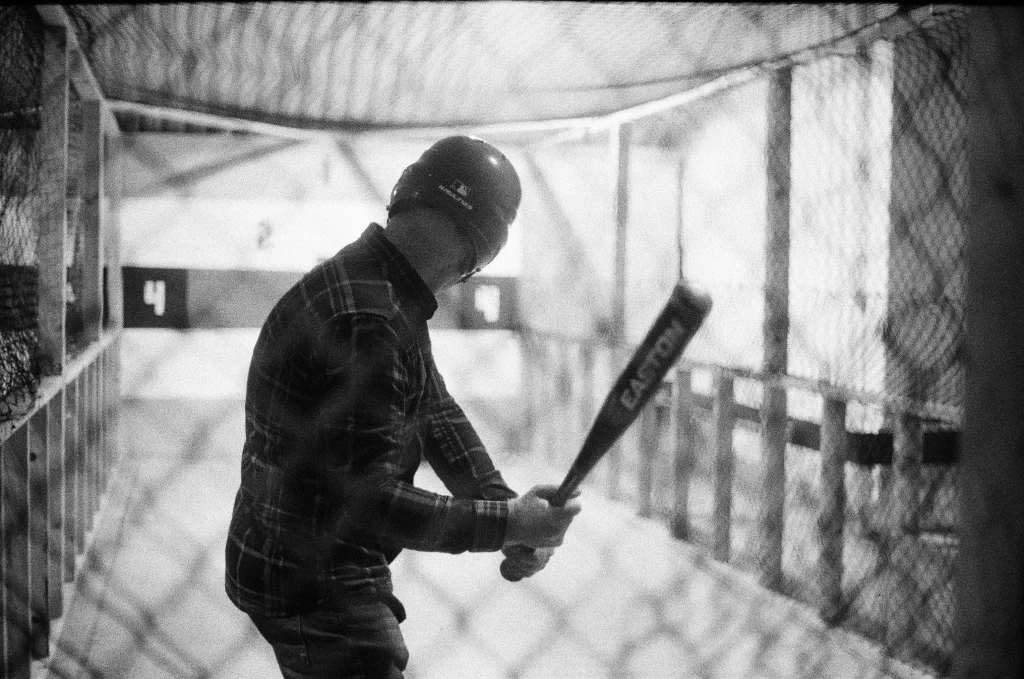
But really, it all comes down to that lens. The Yashica Lynx-14’s 45mm f/1.4 lens renowned for being sharp and it’s fantastic in low light. It’s hard not to wax lyrical about it by attempting to compare it to Leicas and other brands I’ve never shot, but the truth is it’s as good a quality of lens as I’ll ever need… and for under £100 you get a pretty decent 35mm camera attached to it too.
My Instagram – andy_larner
Share this post:
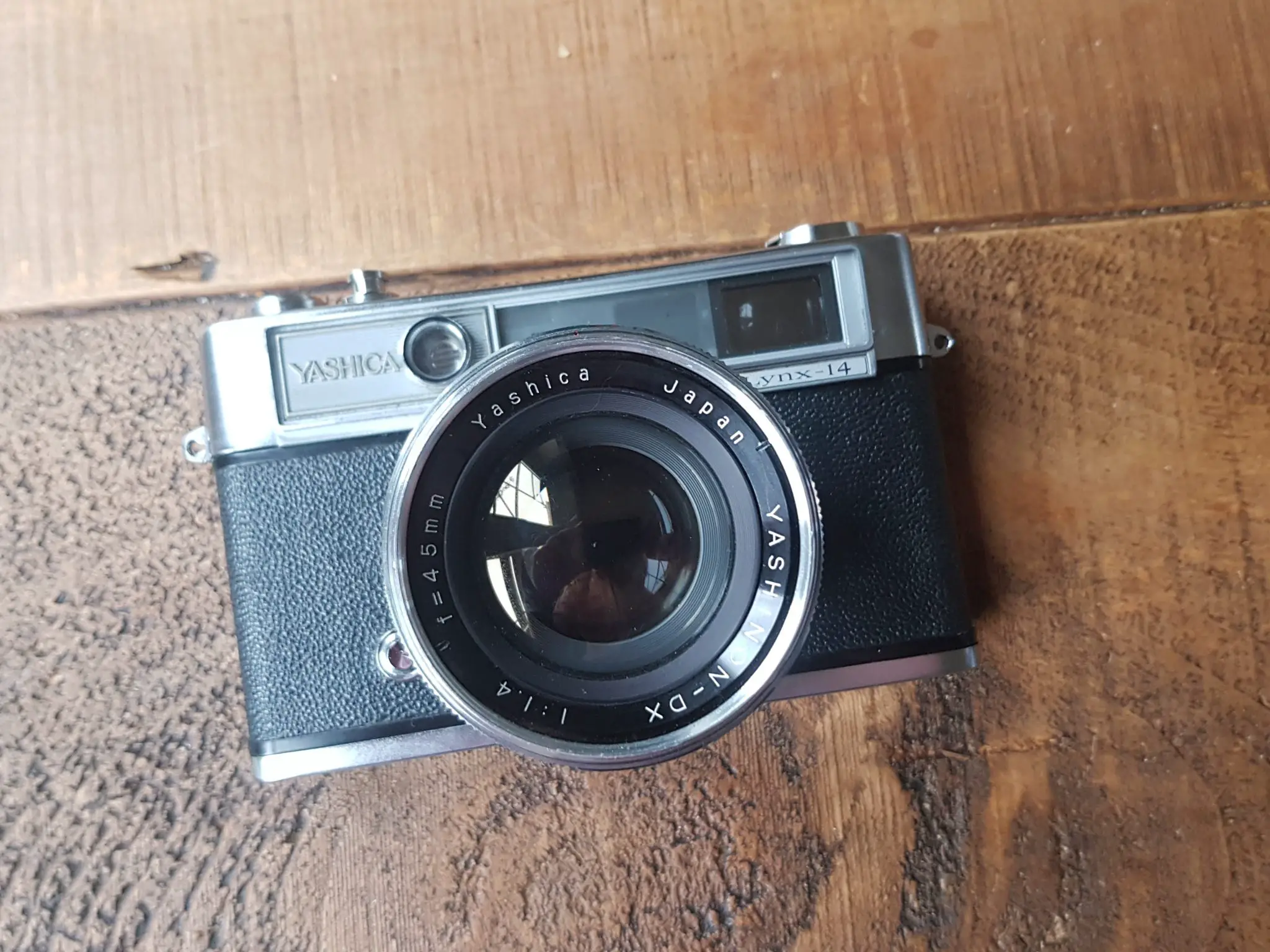








Comments
Mark Rutledge on Yashica Lynx-14 Review – Great 45mm lens (good camera stuck to the back) – By Andy Larner
Comment posted: 14/12/2018
Tom Perry on Yashica Lynx-14 Review – Great 45mm lens (good camera stuck to the back) – By Andy Larner
Comment posted: 14/12/2018
Comment posted: 14/12/2018
220mya on Yashica Lynx-14 Review – Great 45mm lens (good camera stuck to the back) – By Andy Larner
Comment posted: 14/12/2018
Comment posted: 14/12/2018
Bryan on Yashica Lynx-14 Review – Great 45mm lens (good camera stuck to the back) – By Andy Larner
Comment posted: 15/12/2018
Kodachromeguy on Yashica Lynx-14 Review – Great 45mm lens (good camera stuck to the back) – By Andy Larner
Comment posted: 16/12/2018
Comment posted: 16/12/2018
Camera Review Blog No. 12 – Yashica Lynx-14 – Alex Luyckx | Blog on Yashica Lynx-14 Review – Great 45mm lens (good camera stuck to the back) – By Andy Larner
Comment posted: 24/12/2019
Olympus 35RC - A Travelling Review - By Andy Larner - 35mmc on Yashica Lynx-14 Review – Great 45mm lens (good camera stuck to the back) – By Andy Larner
Comment posted: 20/03/2020
Ian Do Carmo on Yashica Lynx-14 Review – Great 45mm lens (good camera stuck to the back) – By Andy Larner
Comment posted: 21/03/2020
You seems to be using it well, and know what you want out of your pictures.
Great photos, thanks for the article.
Mike on Yashica Lynx-14 Review – Great 45mm lens (good camera stuck to the back) – By Andy Larner
Comment posted: 06/11/2023
focus only in metres), a YL F2.8, a Yashica YK, a Yashica J, a Yashica 35 and an ME2. No electronic ones! The missing link is the Lynx F1.4 so I am looking for a good 'un on eBay.